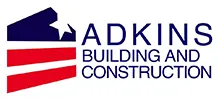If you live in Florida, you’re no stranger to hurricane season and the potential damage it can bring to your home. Flooding, storm surges, and hurricane-force winds can wreak havoc on properties, leaving homeowners faced with the daunting task of rebuilding or renovating. To ensure safety and compliance, it’s essential to remodel following FEMA guidelines, as these rules are specifically designed to protect homes and communities in flood-prone areas. At Adkins Building & Construction, we specialize in helping homeowners navigate FEMA regulations, so your remodel is not only beautiful but also built to last.
FEMA Guidelines and Their Importance
FEMA (the Federal Emergency Management Agency) plays a vital role in disaster response across the United States, including providing guidance for rebuilding homes damaged by hurricanes and storms. One of the key regulations homeowners must consider when planning to remodel following FEMA guidelines is the Substantial Damage Rule, also known as the “50% Rule.”
This rule, part of the National Flood Insurance Program, applies to structures built before December 31, 1974, particularly those located in flood-prone areas. It states that if the cost of repairs or improvements exceeds 50% of the building’s market value, the structure must be brought up to current floodplain management standards. This often includes elevating the home to or above the 100-year flood elevation line to reduce future flood risks.
Understanding the Substantial Damage Rule
To remodel following FEMA guidelines, understanding the Substantial Damage Rule is critical. Here’s how it works:
- Assessing the Damage: If your home has sustained damage, an appraisal is necessary to determine its market value. A building replacement appraisal conducted by your county’s appraiser will provide the baseline figure.
- Calculating the 50% Threshold: Using the appraisal value, you can calculate what 50% of your home’s market value is. If the cost of repairs or renovations exceeds this threshold, your home must meet FEMA’s current construction standards, including elevation and floodproofing requirements.
- Meeting FEMA Standards: Homes that exceed the 50% threshold often require significant upgrades, such as elevating the foundation, installing flood-resistant materials, and improving drainage systems. These measures not only comply with FEMA regulations but also reduce the risk of future damage.
How to Remodel Following FEMA Guidelines
1. Elevating Your Home
One of the most common requirements when you remodel following FEMA guidelines is elevating your home. Homes below the 100-year flood elevation line must be raised to reduce their vulnerability to flooding. This process involves lifting the structure and securing it on a new, elevated foundation, ensuring compliance with FEMA’s floodplain management standards.
2. Using Flood-Resistant Materials
FEMA guidelines recommend using materials that can withstand water exposure without significant damage. For example, concrete, brick, and pressure-treated wood are often used in areas prone to flooding. By incorporating these materials, homeowners can improve the durability and longevity of their renovations.
3. Improving Drainage Systems
Proper drainage is essential in flood-prone areas. When you remodel following FEMA guidelines, consider adding or upgrading drainage systems to divert water away from your home. This might include installing sump pumps, French drains, or elevated landscaping to reduce water buildup.
4. Complying with Local Codes
In addition to FEMA guidelines, you’ll need to adhere to local building codes and permitting requirements. Partnering with an experienced construction company like Adkins Building & Construction ensures that your remodel complies with all regulations, avoiding delays and potential fines.
FEMA Assistance Programs
FEMA understands that meeting these requirements can be financially challenging for some homeowners. Fortunately, there are programs available to provide assistance. Grants, loans, and other funding options may be available to help cover the costs of elevating your home or making other necessary upgrades. Adkins Building & Construction can help guide you through these options and determine which programs might be right for your situation.
Why Choose Adkins Building & Construction?
At Adkins Building & Construction, we have extensive experience helping Florida homeowners remodel following FEMA guidelines. From understanding the Substantial Damage Rule to obtaining necessary permits and ensuring compliance, our team is here to make the process as smooth and stress-free as possible. We work closely with architects, engineers, and local authorities to ensure that every project meets FEMA standards while bringing your vision to life.
Building Resilience with FEMA-Compliant Remodels
When your home has been damaged by a hurricane or storm, rebuilding or renovating can feel overwhelming. However, by choosing to remodel following FEMA guidelines, you’re not only protecting your investment but also ensuring the safety and resilience of your home. Adhering to these standards reduces the risk of future damage, improves your home’s functionality, and brings peace of mind during hurricane season.
If you’re ready to start your remodel or have questions about FEMA compliance, contact Adkins Building & Construction today. Our team of experts is ready to guide you through every step of the process, from initial planning to final construction, ensuring that your home is safe, beautiful, and built to withstand Florida’s coastal challenges.

